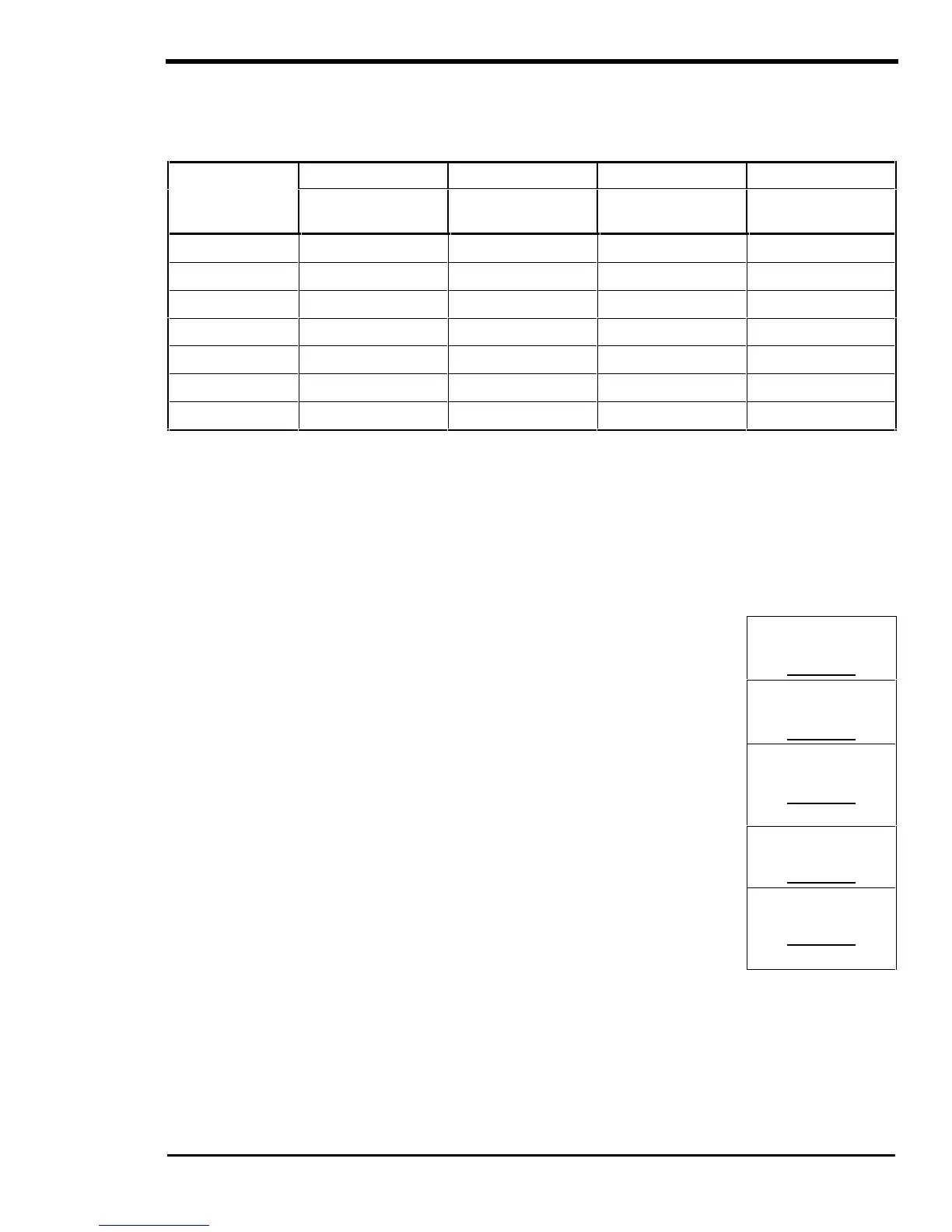TECHNICAL INFORMATION
Copyright Trace Engineering Company, Inc.
5916 - 195th Street N. E.
Arlington, WA 98223
Telephone: 360/435-8826
Fax: 360/435-2229
www.traceengineering.com
SW Series Inverter/Charger
Part No. 2031-5
Rev. B: Sept 1, 1999
Page
103
WORKSHEET
Complete the steps that follow to calculate your inverter’s battery bank capacity.
STEP 1-4: Determine your Average Daily Watt-Hours Needed.
STEP 1 STEP 2 STEP 3 STEP 4
AC APPLIANCE
APPLIANCE RUNNING
WATTS
(X) HOURS USED
EACH DAY
(X) DAYS USED
EACH WEEK
(÷ 7 = ) AVERAGE DAILY
WATT-HOURS NEEDED
STEP 1: Determine what appliances the inverter will power and enter the Appliance Running Wattage
of each appliance.
STEP 2: Determine the number of hours (or fractions of hours) you will use the appliance each day;
STEP 3: Multiply the number of days you will use the appliance during the week; this is your Weekly
Watt-Hours Needed;
STEP 4: Divide your Weekly Watt-Hours Needed by 7 to obtain the Average Daily Watt-Hours
Needed;
STEP 5: Total Average Daily Watt-Hours Needed to determine your Total Daily
Watt-Hours Needed.
Total Daily Watt-Hours Needed
. .
STEP 6: Multiply your Total Daily Watt-Hours Needed (Step 5) by the number of
anticipated days of autonomy (days between charging, usually 1 to 5)
to determine your Autonomy Battery Size (example used 3 days).
Autonomy Battery Size
(Watt Hours)
. .
STEP 7: Multiply your Autonomy Battery Size (Step 6) x 2 to allow for a 50%
maximum battery discharge in normal operation and an additional
50% for emergency situations to obtain your Rough Battery Size in
watt-hours.
Rough Battery Size (Watt-Hours)
. .
STEP 8: Multiply your Rough Battery Estimate x 1.2 to allow for an efficiency of
80%. This number is your Safe Battery Size in watt-hours.
Safe Battery Size (Watt-Hours)
. .
STEP 9: Convert your Safe Battery Size to amp-hours. Divide Safe Battery Size
by the DC system voltage (i.e., 12, 24 or 48 VDC; example used 24-
volts). This number is your Safe Battery Size in amp-hours, which is
the battery bank capacity needed before recharging.
Safe Battery Size (Amp-Hours)
. .

